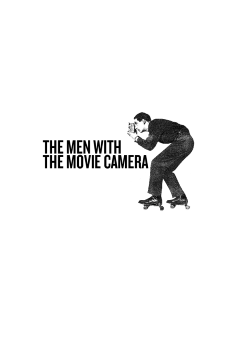
Additional Information
Book Details
Abstract
Unlike previous studies of the Soviet avant-garde during the silent era, which have regarded the works of the period as manifestations of directorial vision, this study emphasizes the collaborative principle at the heart of avant-garde filmmaking units and draws attention to the crucial role of camera operators in creating the visual style of the films, especially on the poetics of composition and lighting. In the Soviet Union of the 1920s and early 1930s, owing to the fetishization of the camera as an embodiment of modern technology, the cameraman was an iconic figure whose creative contribution was encouraged and respected. Drawing upon the film literature of the period, Philip Cavendish describes the culture of the camera operator, charts developments in the art of camera operation, and studies the mechanics of key director-cameraman partnerships. He offers detailed analysis of Soviet avant-garde films and draws comparisons between the visual aesthetics of these works and the modernist experiments taking place in the other spheres of the visual arts.
“Cavendish's carefully researched book argues that men like Eduard Tisse, Anatolii Golovnia, and Danylo Demuts'kyi, among others, should be acknowledged as coauthors, in terms of visual styles, of the films on which they worked. [It] offers exacting descriptions of many shots, developing an appreciation for the styles cultivated by these camera artists despite differences in subject matter or dramatic theme. Though he may at times downplay the director's role in determining how shots were jointly shaped, Cavendish has written one of the most original works of scholarship on Soviet film practice since David Bordwell's brilliant The Cinema of Eisenstein. Summing Up: Essential.” · Choice
“Cavendish’s book is full of insights and details that will delight both experts on the topic and relative neophytes interested in learning more about the remarkable decade of early Soviet cinema…Given the sheer number of previous studies on early Soviet cinema, it is rare when you can state that a book about Soviet avant-garde cinema fundamentally reshapes what we thought we knew about film styles and film cultures in that decade. Cavendish’s work, however, has accomplished that feat.” · Review in Canadian-American Slavic Studies
“…in combining a series of critical biographies that emphasize the interconnections between film aesthetics and other art forms like photography with accounts of the history of domestic technological development and international exchange, Cavendish continues to produce the most compelling scholarship on Soviet film style." · Studies in Russian and Soviet Cinema
“Cavendish’s monograph is a painstakingly researched piece of film scholarship which excels in film history as much as in formal analysis… [It] remains a scholarly work to be reckoned with – an exhaustive formal analysis of a neglected but key aspect of cinema, sensible in its interpretative claims, and supported by rich contextual information.” · Apparatus
“Boasting an impressive grasp of silent cinema’s historical trends, Cavendish provides useful analysis of the camera work and lighting underlying the collaboration of four camera operator-director pairs. Cavendish has produced an invaluable study of Soviet avant-garde cinema that finally gives cameramen their due credit.” · Slavic Review
“Cavendish’s research underlines the impact of modernity on Soviet avant-garde cinema: the dissolution of aesthetic hierarchies and the poeticization of the commonplace, seen in the shooting of new objects in new locations, such as industrial and technological landscapes marked by death and violence … Cavendish’s book might also be seen as an alternative history of Russian cinema, as it focuses on the work of the creative units of teams of directors and camera operators of the 1920s… [It] is accompanied by a strong research apparatus [and] of great help and value for anyone interested in the history of Russian cinema.” · Slavic and East European Journal
“The great strength of this book is the way it looks so closely and carefully at the techniques — truncated camera angles, mirrors, specialized lenses — used by avant-garde camera operators during the 1920s. Cavendish is particularly attentive to the cameraman’s lighting choices… Anybody who teaches early Soviet film will want to consult Cavendish’s detailed, technical descriptions of the devices employed by particular cameramen for particular films… [An] excellent and inspiring book.” · Slavonic & East European Review
“…very well written…The author’s methodology is extremely well suited to the topic and the conceptual concern is simply path breaking…The author presents an invaluable theoretical introduction (fundamentally redefining the traditional attributions of cinematic innovation) and provides four very detailed case studies to demonstrate and ground his reading.” · Vladimir Padunov, University of Pittsburgh
“This is an excellent piece of scholarship. It is detailed and superbly referenced, with a great amount of detail in each chapter, and is obviously the fruit of many years’ work. The author has identified a major new area of investigation in what is otherwise a crowded field: Soviet cinema in the 1920s. Nevertheless, there has until this work been no sustained examination of the role of the camera operator in the films of these years.” · David Gillespie, University of Bath
Philip Cavendish is Reader in Russian and Soviet Film Studies at the School of Slavonic and East European Studies, University College London. He is the author of Mining for Jewels: Evgenii Zamiatin and the Literary Stylization of Rus′ (MHRA, 2000), and Soviet Mainstream Cinematography: The Silent Era (UCL, 2007).
